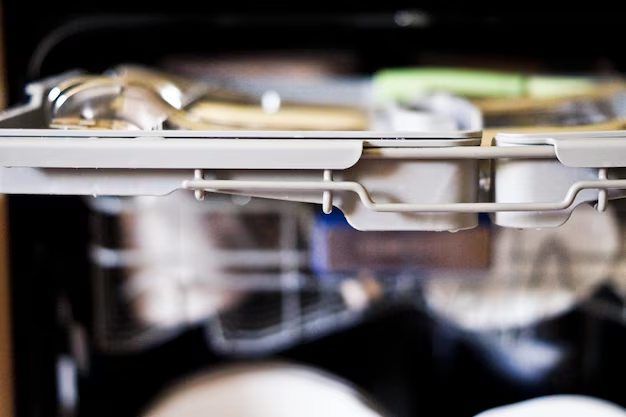Is Rust in Your Refrigerator a Cause for Concern?
When you open your refrigerator, you're expecting to find neatly stored food and refreshments. But what if you discover rust on your appliance's surface or interior? Rust in a refrigerator can raise red flags for many homeowners. Is it merely an aesthetic issue, or could it be a sign of more significant problems lurking beneath the surface? Let's dive into the rusty topic to uncover whether it poses any danger and what you can do about it.
🛠️ Understanding Rust Formation in Refrigerators
What Causes Rust?
Rust is the result of a chemical reaction known as oxidation, which occurs when iron and its alloys, such as steel, are exposed to oxygen and moisture. Refrigerators, often made of steel, are no strangers to these elements due to the moisture inside and out.
Key Factors Contributing to Rust:
- Humidity: High levels inside the fridge can exacerbate rust formation.
- Spills and Leaks: Liquids can seep into crevices, accelerating rust.
- Wear and Tear: Daily use, scratches, and dents provide a foothold for rust.
Common Areas Affected by Rust
- Exterior Surfaces: The door, hinges, and handles.
- Interior Shelving: Metal shelves, racks, or liners.
- Back Panel: Where mechanical components like coils are located.
🚨 Is Rust in Your Refrigerator Dangerous?
While rust is generally seen as unsightly, whether it’s dangerous varies by context. Here's a breakdown of potential dangers:
Health Implications
- Direct Contact: Touching rusty surfaces inside your fridge isn't usually hazardous, but tetanus concerns can arise with deep scratches or cuts.
- Contamination Concerns: Although unlikely, rust could flake off and contact food, potentially leading to metal ingestion concerns.
Mechanical and Structural Risks
- Structural Integrity: Extensive rust can weaken components, leading to appliance failure.
- Electrical Hazards: Rust near wiring or coils could cause electrical issues or increase fire risk.
Efficiency Issues
- Insulation Breakdown: Rust may damage the insulation, affecting cooling efficiency.
- Seal Damage: Rust around the door can weaken seals, leading to energy waste.
🔍 Assessing the Rust Severity
How do you determine if the rust is more than a cosmetic issue? Consider the following guidelines:
Minor Surface Rust
- Characteristics: Limited to small patches on the exterior.
- Action Required: Often a cleaning and repainting job can curb progress.
Moderate Internal Rust
- Characteristics: Rust on shelves, racks, or hinges.
- Action Required: Scrubbing and using sealants may suffice; replace parts if necessary.
Severe Rust Involving Mechanicals
- Characteristics: Near coils, wiring, or extensive spread.
- Action Required: Seek professional evaluation for potential replacement or repair.
🧹 How to Prevent and Treat Rust in Refrigerators
Prevention Tips
- Control Humidity: Use dehumidifiers or baking soda to absorb excess moisture.
- Promptly Clean Spills: Wipe off liquid spills immediately.
- Regular Maintenance: Routinely check seals, gaskets, and internal mechanics.
- Protective Coating: Applying a rust-inhibiting paint can preclude rust.
Treatment Options
- Surface Rust: Sand and repaint with appliance-safe paint.
- Interior Rust: Clean with a mild detergent and protective spray.
- Hardware Replacement: Replace rusty shelves, handles, and hinges.
When to Call a Professional
- Severe Rust: If noticed around electrical components.
- Persistent Rusting: Despite taking preventative actions.
✨ Practical Summaries for Quick Reference
Here's a quick rundown of essential rust handling advice:
🚀 Rust Prevention Tips
- 🧊 Manage Moisture: Use moisture absorbers.
- 🚿 Clean Spills Quickly: Avoid letting water sit.
- 🌿 Regular Maintenance: Check for wear and tear.
🚨 Warning Signs to Watch
- ⚡ Electrical Hazards: Rust near cords/coils.
- 🍽️ Food Contact: Flakes or stains on food.
- 🔧 Weakened Parts: Rust compromising shelves or seals.
By understanding what rust signifies and how to manage it, you can keep your refrigerator working efficiently and safely. Rust might start as a small aesthetic blemish, but it's wise to address it proactively, ensuring your appliance remains in top condition for years to come.
